Internet is part of our daily life now, so “unable to connect to the internet” can drive you crazy. Don’t worry, this problem should be easy to fix. Now let’s see what kind of situation you’re in.
Let’s make it more clear. Connecting to the Internet with another device. If all devices can’t connect to the internet, it’s definitely something wrong with your network. But if it’s only your device that can’t access the network, you should click the first link.
Your device can’t link to the network
Make sure you’ve turned on the wireless network adapter and you’re linked to the correct Wi-Fi with the correct password. If restart your computer doesn’t help, you can try the following methods.
- Use Internet Connections troubleshooter
- Reset your network adaptor and TCP/IP
- Release and renew your IP address
- Update your network adapter driver
- Turn off your firewall/antivirus software
Method 1: Use Internet Connections troubleshooter
Whenever you’re having problems with Windows system, the easiest method you can try is to run the Windows built-in troubleshooters. Windows 10 has built-in troubleshooters to diagnose and automatically fix common problems. There are many troubleshooters for different problems.
You can use the troubleshooter which specific for “unable to connect to the Internet” issue to resolve the problem.
- Press the Windows key + I together and click Update & Security.

- In the Troubleshoot tab, click Internet Connections and then click Run the troubleshooter.

- Click Troubleshoot my connection to the Internet.

- Follow the instructions on the screen then restart your computer.
- Check whether you can connect to the internet or not.
Method 2: Reset your network adaptor and TCP/IP
A possible cause for this issue is something wrong with the network adaptor or TCP/IP settings. So resetting your network adaptor and TCP/IP may fix this problem directly.
- Press the Windows logo key + R to open the Run box.
- Type “cmd” and press Ctrl + Shift + Enter together to run as administrator.
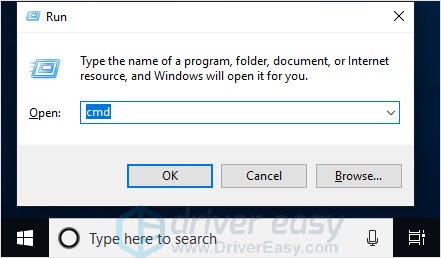
- Type netsh winsock reset and press Enter.
- Type netsh int ip reset and press Enter.

- Reboot your computer and connect with your network.
If this method doesn’t work, go to method 3.
Method 3: Release and renew your IP address
Sometimes this Internet connectivity issue happens because of the change of the IP address. So in order to let Windows get a new IP from DHCP server, release and renew our IP address may help you connect to the Internet again.
- Press the Windows logo key + R to open the Run box.
- Type “cmd” and press Ctrl + Shift + Enter together to run as administrator.

- Type ipconfig /release and press Enter.

- Type ipconfig /renew and hit Enter.

- Reboot your computer and connect with your network.
Method 4: Update your network adapter driver
This unable to connect to the internet problem may occur when you’re using the wrong network adapter driver or it’s out of date. So, update to the correct and latest driver may fix this problem. If you don’t have the time, patience or computer skills to update the driver manually, especially when you don’t have Internet access to the said computer, you can do it automatically with Driver Easy.
Driver Easy is a driver updater that automatically recognizes your system and finds the correct drivers for it. It also comes with the Offline Scan feature that helps you update your drivers when your computer doesn’t have an Internet connection.
Here’s how to use the Offline Scan feature to update your network adaptor driver:
- Find a computer with Internet access, download and install Driver Easy. Then copy the setup file of Driver Easy into a USB flash drive and transfer it to the target computer (the computer without an Internet connection).
- On the target computer, run the Driver Easy setup file to install Driver Easy.
- Run Driver Easy and click Tools in the left pane.
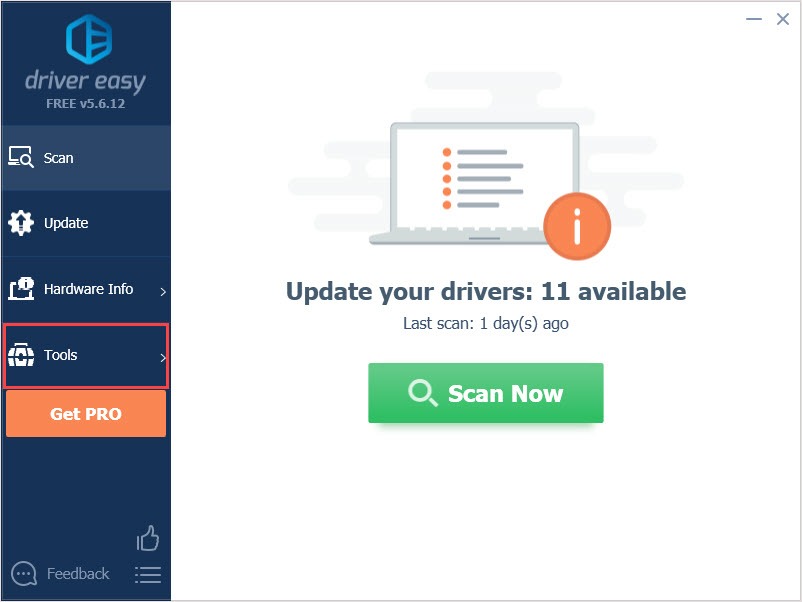
- Click Offline Scan. Then select Offline Scan (on the computer without Internet access) and click Continue.
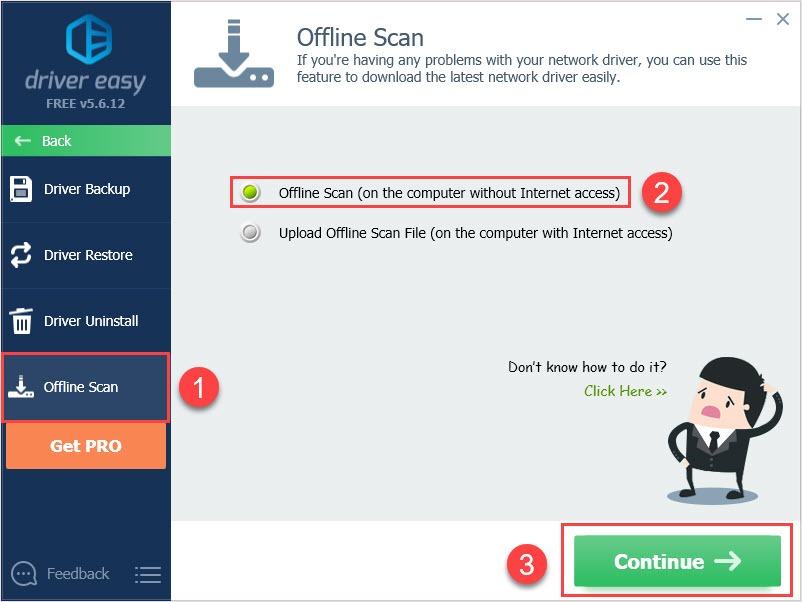
- Click Browse…, then choose a destination folder in your computer to save the offline scan file. After that, click Offline Scan.
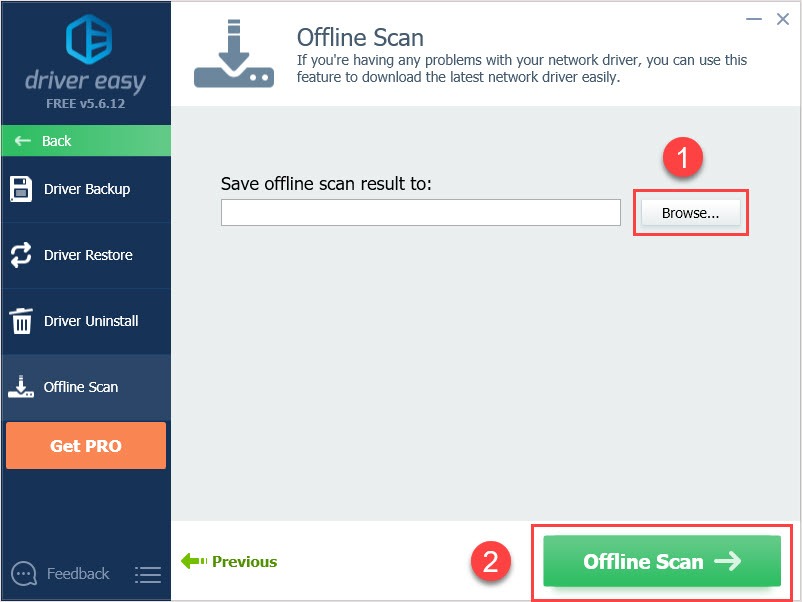
- A window will pop up telling you that the offline scan file has been saved. Click OK to confirm.
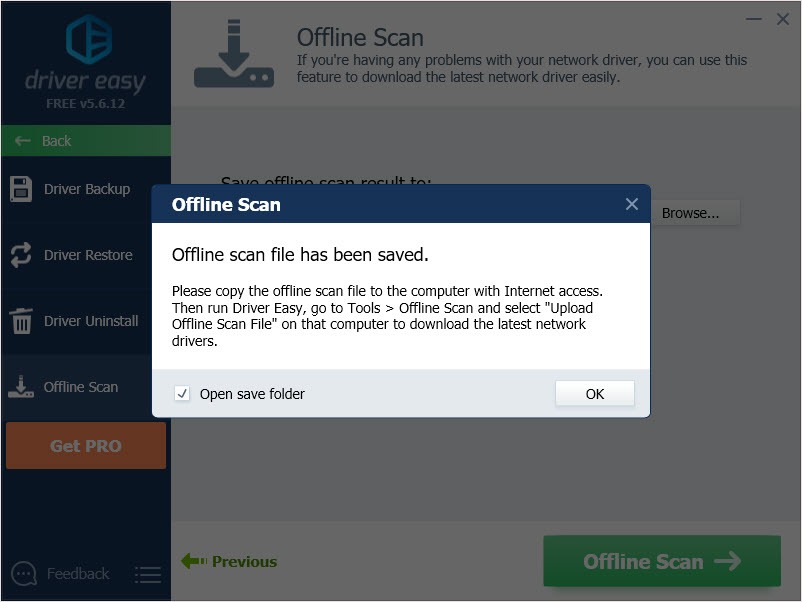
- Open the folder where you’ve saved the offline scan file. Then save the file in a USB flash drive and transfer it to another computer with the Internet connection.
- On the computer with an Internet connection, run Driver Easy and click Tools in the left pane.

- Click Offline Scan. Then select Upload Offline Scan File (on the computer with Internet access) and click Continue.
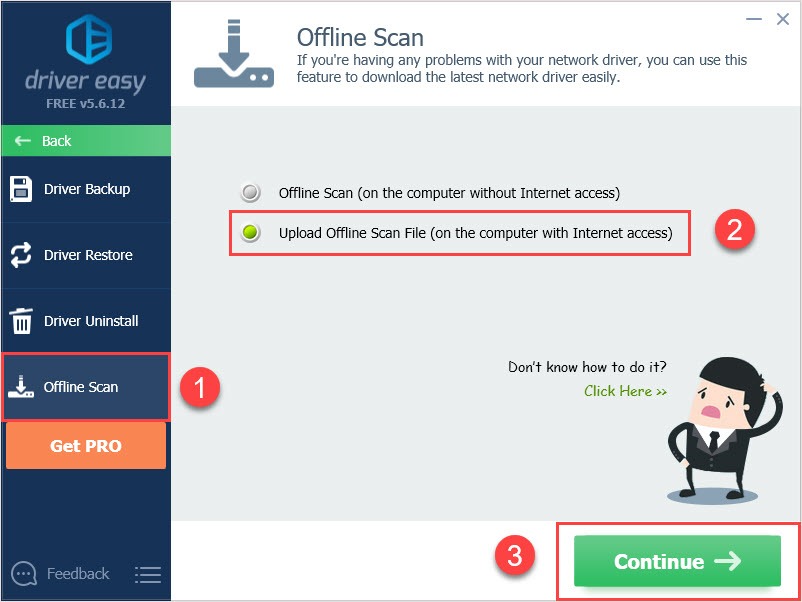
- Click Browse… to locate the offline scan file. Then click Continue.

- Click the Download button next to your driver.
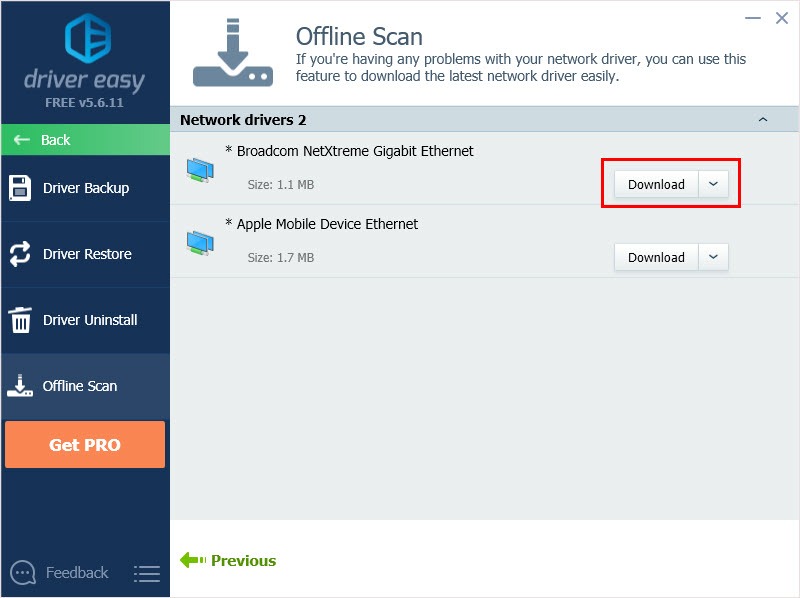
- Wait until the computer completes. When it does, save the downloaded file to your USB drive and transfer it to the target computer.
- You can follow Step 3 of Driver Easy Help to manually install your network driver.
- Remember to restart your computer for the changes to take effect even if you’re not asked to.
Hopefully, after updating the driver for your network adapter, you can connect to the Internet.
Method 5: Turn off your firewall/antivirus software
The protection Apps may be the reason for unable to connect to the Internet. Sometimes these protection programs may overreact and cause conflicts with internet connections. Reported by many users, the antivirus app McAfee is one of them. You can try to uninstall McAfee or any apps you’ve recently installed to see if the problem goes away.
If this method resolves the problem, you can install another antivirus software to protect your computer. But if you are fond of the old one, contact the vendor of your antivirus software and ask them for advice.
IMPORTANT: Be extra careful in using the Internet after uninstalling/disabling your antivirus software.
The network can’t access the internet
If your other devices can’t access the internet through your family network, obviously there’s something wrong with your network.
Method 1: Restart your Internet modem and router
If you’re using Wi-Fi at home, you can simply unplug your modem or router to reboot it. This may help you solve the internet issue.
Method 2: A soft reset on your network
A soft reset can refresh your router and modem so that they can perform well. Usually pressing the power button on your router would perform a soft reset. You can follow the instructions from your router manufacturer’s official website.
Method 3: Contact your internet service provider
If you’ve tried everything and still can’t access the internet, contact your internet service provider for help. Ask someone to come and solve the problem.
Hopefully, the methods above can solve your problem. If you have any questions or suggestions, please leave a comment. We’ll try our best to help. If you like this article, please give us a thumb.





